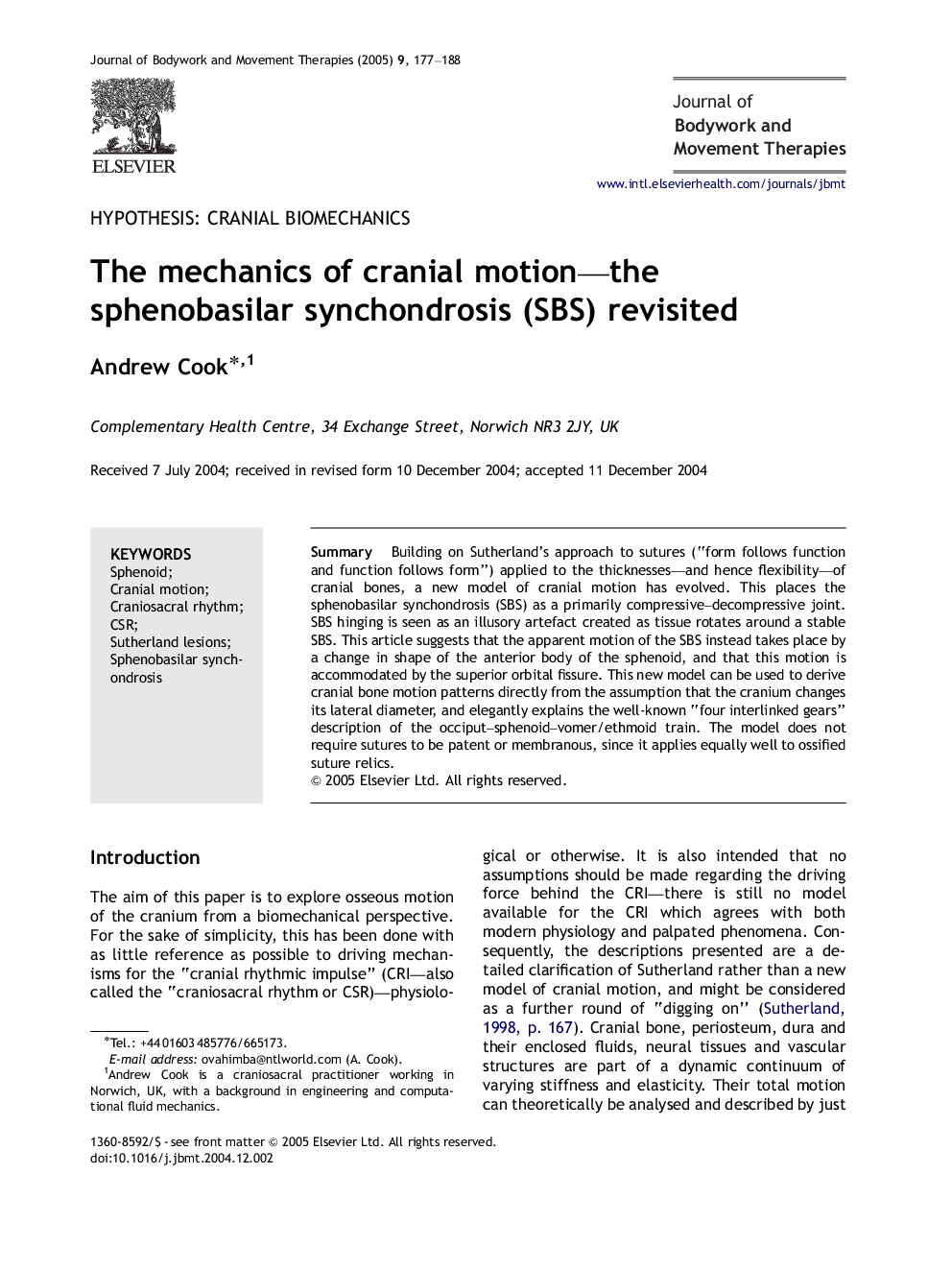| Article ID | Journal | Published Year | Pages | File Type |
|---|---|---|---|---|
| 9046751 | Journal of Bodywork and Movement Therapies | 2005 | 12 Pages |
Abstract
Building on Sutherland's approach to sutures (“form follows function and function follows form”) applied to the thicknesses-and hence flexibility-of cranial bones, a new model of cranial motion has evolved. This places the sphenobasilar synchondrosis (SBS) as a primarily compressive-decompressive joint. SBS hinging is seen as an illusory artefact created as tissue rotates around a stable SBS. This article suggests that the apparent motion of the SBS instead takes place by a change in shape of the anterior body of the sphenoid, and that this motion is accommodated by the superior orbital fissure. This new model can be used to derive cranial bone motion patterns directly from the assumption that the cranium changes its lateral diameter, and elegantly explains the well-known “four interlinked gears” description of the occiput-sphenoid-vomer/ethmoid train. The model does not require sutures to be patent or membranous, since it applies equally well to ossified suture relics.
Related Topics
Health Sciences
Medicine and Dentistry
Complementary and Alternative Medicine
Authors
Andrew Cook,
